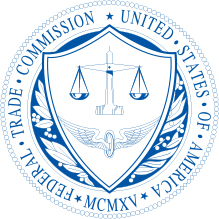 In the wake of rising ad blocking, publishers are looking to native ads as revenue solutions. But the FTC has a stern warning…and enforcement is likely not far behind.
In the wake of rising ad blocking, publishers are looking to native ads as revenue solutions. But the FTC has a stern warning…and enforcement is likely not far behind.
As consumers regain control of their devices by installing ad blocking software at astonishing rates, the industry is leaning harder than ever on native advertising (aka sponsored content) to bring in revenue. That leaves most publishers, according to Lucia Moses in Digiday, skating dangerously close to thin ice with the FTC.
“Only 30 percent of publishers are in compliance with the FTC’s new guidelines that address how ads are labeled, visibility of sponsor name and prominence of the label,” writes Moses, citing MediaRadar’s Todd Krizelman.
“Fully 26 percent of websites run native without mention of the sponsor at all, [Krizelman’s] data shows,” Moses continues.
Those new FTC guidelines make it clear that native advertising as it’s commonly done today falls under “deceptive or unfair practices.”
“For starters, virtually no publishers use the word ‘advertisement’ in their labeling,” Moses explains. “A review of 63 publishers’ native ads by native ad firm Nudge shows the most common terms were ‘sponsored,’ used by 12.7 percent; ‘presented by’ (9.5 percent); and ‘sponsor story’ or ‘sponsored story’ (7.9 percent).”
Those rather vague terms aren’t enough, the FTC says.
The new policy leaves sites like BuzzFeed, Outbrain and Taboola in dangerous waters, Moses notes. BuzzFeed for one calls its advertising partners “brand publisher,” leaving consumers quite in the dark that they are about to click through to ad copy rather than editorial content.
It’s this that the FTC wants to avoid.
“Arguing that—like any other form of advertising—native advertisements should be identifiable as such to consumers, the FTC laid out the elements it said determine whether an ad is being ‘materially misleading’ about its commercial nature, primarily by citing previous applicable policy decisions in other forms of media,” explains Greg Dool in Folio:.
“Advertisements that appear in a ‘news format’ or that ‘otherwise misrepresent their source or nature,’ specifically, those lacking a clear and readily noticeable ‘ADVERTISEMENT’ disclosure label, can be easily seen as deceptive and in violation of FTC policy,” writes Dool.
In response to the FTC’s announcement, the industry group Interactive Advertising Bureau (IAB) took a somewhat petulant middle ground.
“While guidance serves great benefit to the industry, it must also be technically feasible, creatively relevant, and not stifle innovation,” Dool quotes Brad Weltman, IAB’s VP of public policy, as saying.
“To that end, we have reservations about some elements of the Commision’s [sic] Guidance. In particular, the section on ‘clarity of meaning’ in native advertising disclosures is overly prescriptive, especially absent any compelling evidence to justify some terms over others,” Weltman continued.
It comes down to semantics, as most government regulations do. Task forces will be convened, nuances will be discussed, and the industry will continue to find ways to get people to click.
Meanwhile, the FTC may be putting some teeth into the fight, according to some.
“We take the Commission’s final note to be a sign that enforcement in the native advertising space is not far behind this announcement,” Weltman told Dool.
There is one radical way to stay in compliance. Don’t deceive. Be clear. The industry is reeling from deceptive digital ad practices, and consumers have said “enough already.” Sponsored content is getting through the ad filters, but publishers are poised to screw that up too, with consumers feeling deceived and misled.
Using sponsored content? Fine, just call it out. Let the consumers decide.

August 17, 2016, 8:21 am